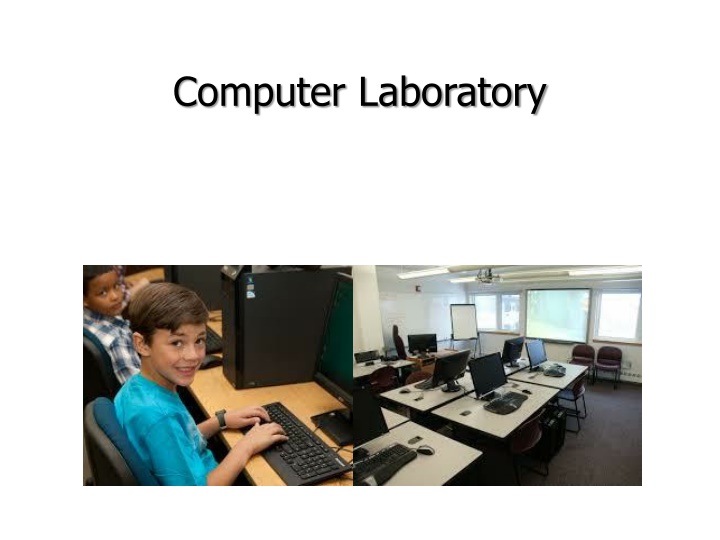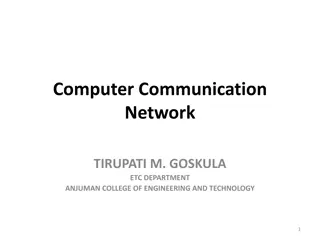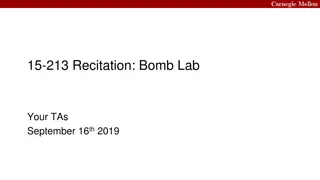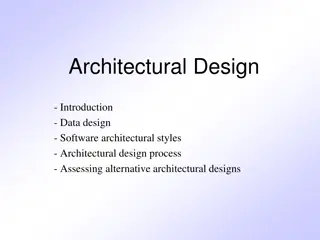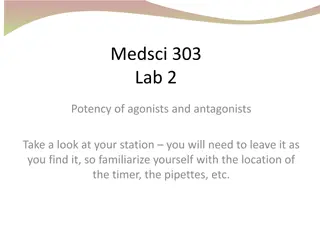Essential Aspects of Computer Lab Design and Management
A computer lab is a space that provides computer services to a defined community, commonly found in libraries, academic institutions, and other public institutions. It is important to consider factors like room size, layout, furniture ergonomics, and proximity to existing computer classrooms when designing and managing a computer lab. This space is utilized for various purposes, including student access to necessary software, programming instruction, and coursework completion. Neglecting the design and layout of a computer lab can hinder its effectiveness in fulfilling its intended functions.
Download Presentation

Please find below an Image/Link to download the presentation.
The content on the website is provided AS IS for your information and personal use only. It may not be sold, licensed, or shared on other websites without obtaining consent from the author.If you encounter any issues during the download, it is possible that the publisher has removed the file from their server.
You are allowed to download the files provided on this website for personal or commercial use, subject to the condition that they are used lawfully. All files are the property of their respective owners.
The content on the website is provided AS IS for your information and personal use only. It may not be sold, licensed, or shared on other websites without obtaining consent from the author.
E N D
Presentation Transcript
Objectives Introduction to Computer Lab Understand computer lab feature Understand Design/layout computer lab Management of student in computer lab Computer Lab Design and Management Rules governing Computer Lab Similar Spaces
Introduction A computer lab is a space which provides computer services to a defined community. Computer labs are typically provided by libraries to the public, by academic institutions to students who attend the institution, or by other institutions to the public or to people affiliated with that institution. Computers in computer labs are typically equipped with internet access, while scanners and printers may augment the lab setup
Introduction Computer labs are more than just rooms with lots of computers. Care must be taken to ensure that the lab is easy to access and fulfills its purpose. Many schools and colleges/University use computer labs to allow student access to the software necessary to complete coursework.
Introduction Also Computer labs are used to instruct students on computer use, programming, and related subjects. However, many institutions give little thought to the design and layout of the lab. Too often, they simply fill a room with computers and set up the machines any way they fit inside the room
Feature/characteristics Enough space (room size, geometry) Room location in a building (ie basement) Building s existing electrical and HVAC system Proximity to existing computer classroom
Feature/characteristics Furniture (ergonomics- the scientific study of people and their working conditions, especially done in order to improve effectiveness:) Computer with software needed for teaching the subject/topic Dim light Rules Technician
Design/layout of Computer Lab The layout of the room, the location and size of the student desks, the location of the instructor all need to be considered Four (4) most popular computer laboratory layouts and designs used in Schools, High Schools and colleges/universities.
Think pair - share Why Computer Lab Design and Layout is Important?
Computer Lab Design and Layout Refer to the
Design and Layout Similarly, the design and layout of a computer lab creates rules and defines how the lab can be used. Thought given to the layout of a computer lab dictates the usefulness of the lab and increases user satisfaction which justifies its expense and assists in future investments in upgrades. Certainly, the layout of the lab depends on the equipment, the furniture, and space available.
Design and Layout The purpose of this document is to discuss some basic computer lab layouts and their advantages and disadvantages. Any of these layouts can be modified to satisfy the individual needs of the institution. It just takes a little planning and imagination to adapt any of these designs to a specific application.
1. Classroom Computer Lab Designs The classic classroom computer lab design serves as the default layout in many High School and Colleges. However, it does have two major advantages. First, it serves as a great instruction room where students learn computer topics from an instructor at the front of the room.
1. Classroom Computer Lab Designs With everyone facing the same direction, it allows instructors to see the faces of the students with which to read non-verbal cues as to whether students are learning the material or need more help. Second, it is similar to the layout of other classroom environment emphasizing that the students are there to learn.
Disadvantage One disadvantage of the classroom layout is the need to disturb other students along the rows of computers as students enter and exit the lab. For labs where students are coming and going, the classroom layout is not ideal. In addition, the classroom layout is not conducive to team work. It is difficult for students to work together, especially on collective projects and in peer-assist teaching models
2. Four-Leaf Clover Computer Lab Layouts The four-leaf clover design offers the most privacy for students and reduces to a minimum the possibility of cheating during tests or exercises. It also eliminates the need for students to disturb others when entering and exiting the lab and allows instructors to go from student to student to address individual problems and concerns.
Four-Leaf Clover Computer Lab Layouts One disadvantage of the four-leaf clover design has to do with attention spans. When students are sitting at their own computers, instructors will not be able to see what each student is doing at his/her workstation. Students may not be paying attention to lessons or may be surfing to inappropriate websites in labs equipped with Internet access.
Four-Leaf Clover Computer Lab Layouts Four-leaf clover designs can also be more expensive if each computer sits on its own table. Some computer lab furniture is made specifically for this design offering space for four computers on one table or desk. The next two designs are less traditional but offer some things the classroom layout and the four-leaf clover layout do not.
3.U-Shaped Computer Lab Designs The U-shaped computer lab layout encourages engagement between instructors and students. Instructors can enter the U and engage with students one-on-one. This design also serves as the most conducive layout for computer maintenance as technicians do not have to disturb others to gain access to the computers. In addition, students will not interfere with other students work while entering and exiting the lab.
U-Shaped Computer Lab Designs Unfortunately, the U-shaped design offers little opportunity for instructors to monitor what students are doing and looking at on their monitors. This design is not compatible with test taking and requires many assistants to monitor students. Furthermore, this design often takes up more space that other layouts.
4. Inverted U-Shaped Computer Lab Layouts Like the U-shaped layout, the Inverted U-shape also offers engagement between instructors and students. In addition, the layout allows for the most convenient method of monitoring students. For individual learning, this layout minimizes the distance instructors must walk to move from workstation to workstation and student to student.
Inverted U-Shaped Computer Lab Layouts Like the classroom layout, traffic into and out of the Inverted U-shape can become constrictive especially when all of the students must enter and exit at the same time. This congestion is reduced if students are entering and exiting individually as in an open lab paradigm where students can come and go as they please. In addition, this layout takes up the same amount of space as the U-shaped design. If space is not a consideration, either of the U-shaped layouts is appropriate
Inverted U-Shaped Computer Lab Layouts
Layout There are many options when designing the layout of a computer lab. What important is to make sure: Thought and planning at the beginning of designing the lab ensures that students and instructors are satisfied with what the lab offers. Choosing a sub-optimal layout can negatively affect student learning and reduce the engagement between instructors and students.
Room Renovation Most rooms were not designed for computers. Some rooms may need work to bring them up to basic standards. In general, the older the building and the room, the more needs to be done to adopt it to the computer classroom environment. We have mentioned some aspects already. But the here are some questions to ask as you build the project plan. Access: Will the doors allow for handicap access? Safety : Are fire alarm sensors and/or fire alarms located in or near the room?
Room Renovation Security: Are there existing room alarm systems that can accommodate for fiber optic theft alarm systems? Are there doors or windows in the room that need to be secured or alarmed? Floors : Is asbestos present in the floor tiles and require removal? Is there a need to install or replace floor tiles? Is carpeting required? Walls: Will they need to be painted? Will they need to be removed (the case where two small rooms are combined as one)? Will doors need to be removed or added? Will windows need to be removed or added? Will sound baffles need to be installed to reduce noise?
Room Renovation Electrical: Can the electrical circuits in the room support the additional load? Where are the existing electrical outlets? How will the electrical cabling be rewired to line up with the furniture and overall design? Lighting: Is lighting sufficient for the room? Will it allow for dimming when projecting? Networking: Is there a connection in the room leading to the campus internet connection? How is it wired into the room and will additional wiring be required? Is there a need for a phone in the room?
Management of users and facilities in computer Lab
Policy and rules Users typically must follow a certain user policy to retain access to the computers. This generally consists of the user not engaging in illegal activities or attempting to circumvent any security or content-control software while using the computers. In public settings, computer lab users are often subject to time limits, in order to allow more people a chance to use the lab, whereas in other institutions, computer access typically requires valid personal login credentials, which may also allow the institution to track the user's activities
Rules As discussed in the previous section of pre- reading, here is the link for general computer lab http://www.southseattle.edu/computerlabs/rules -policies.aspx
